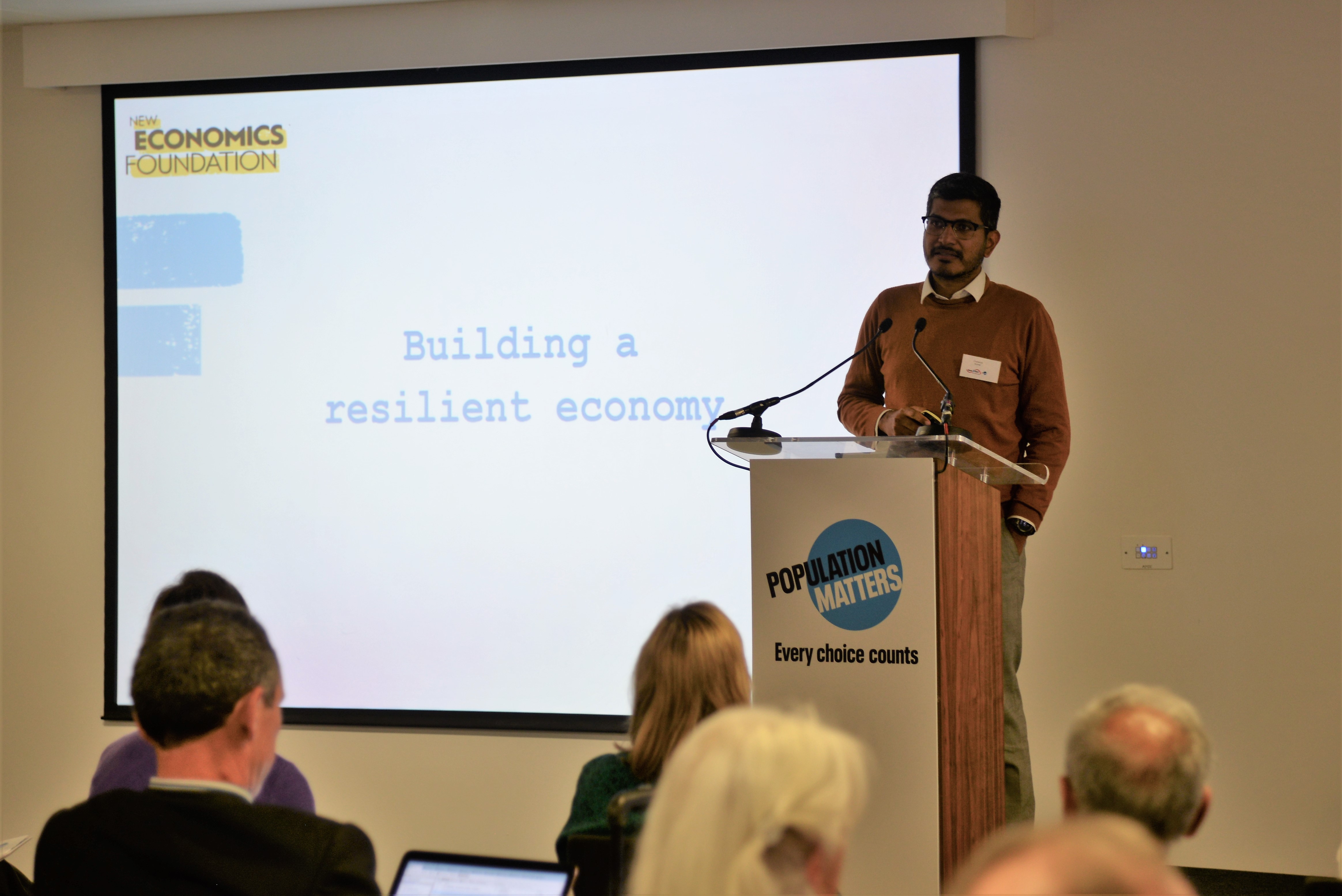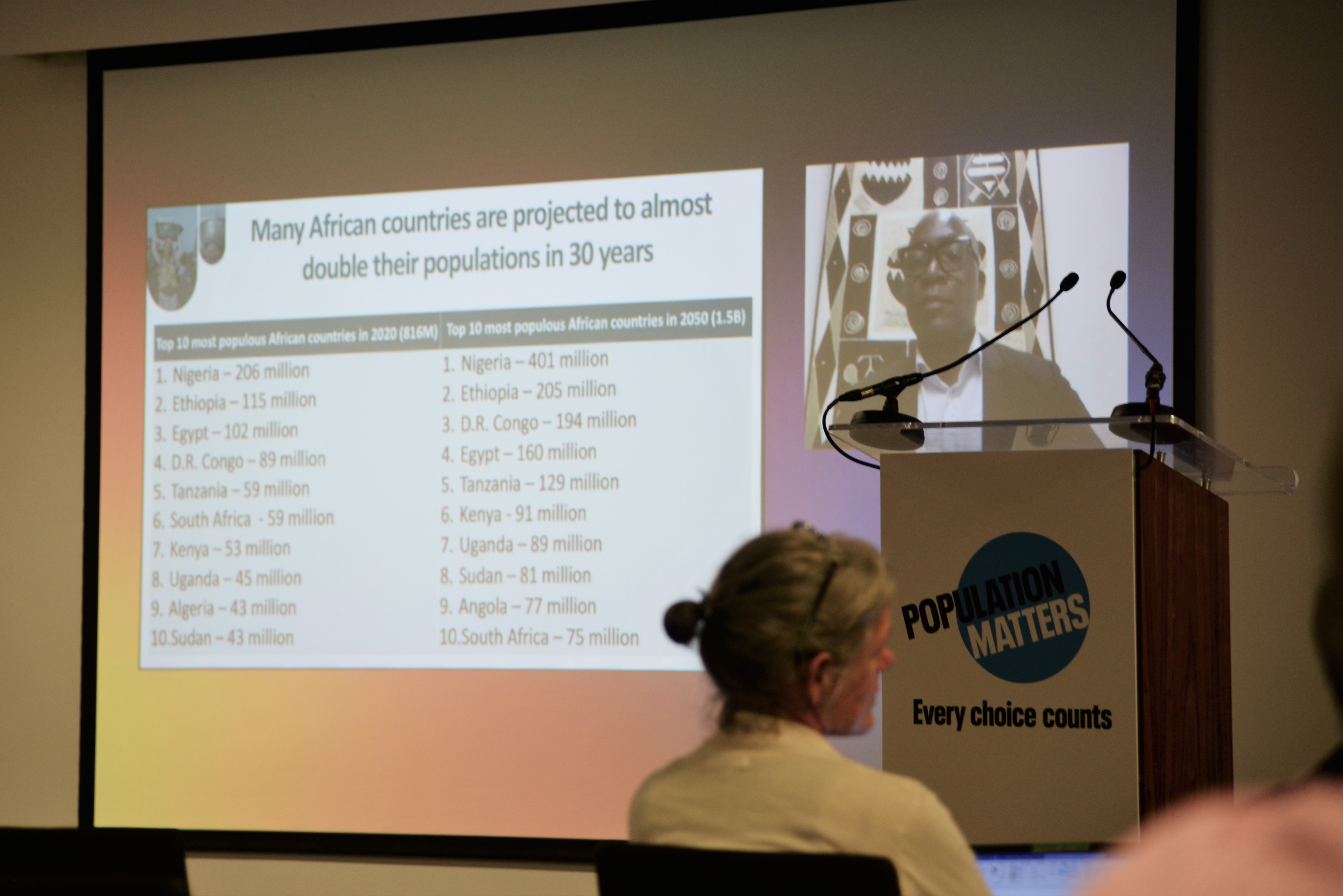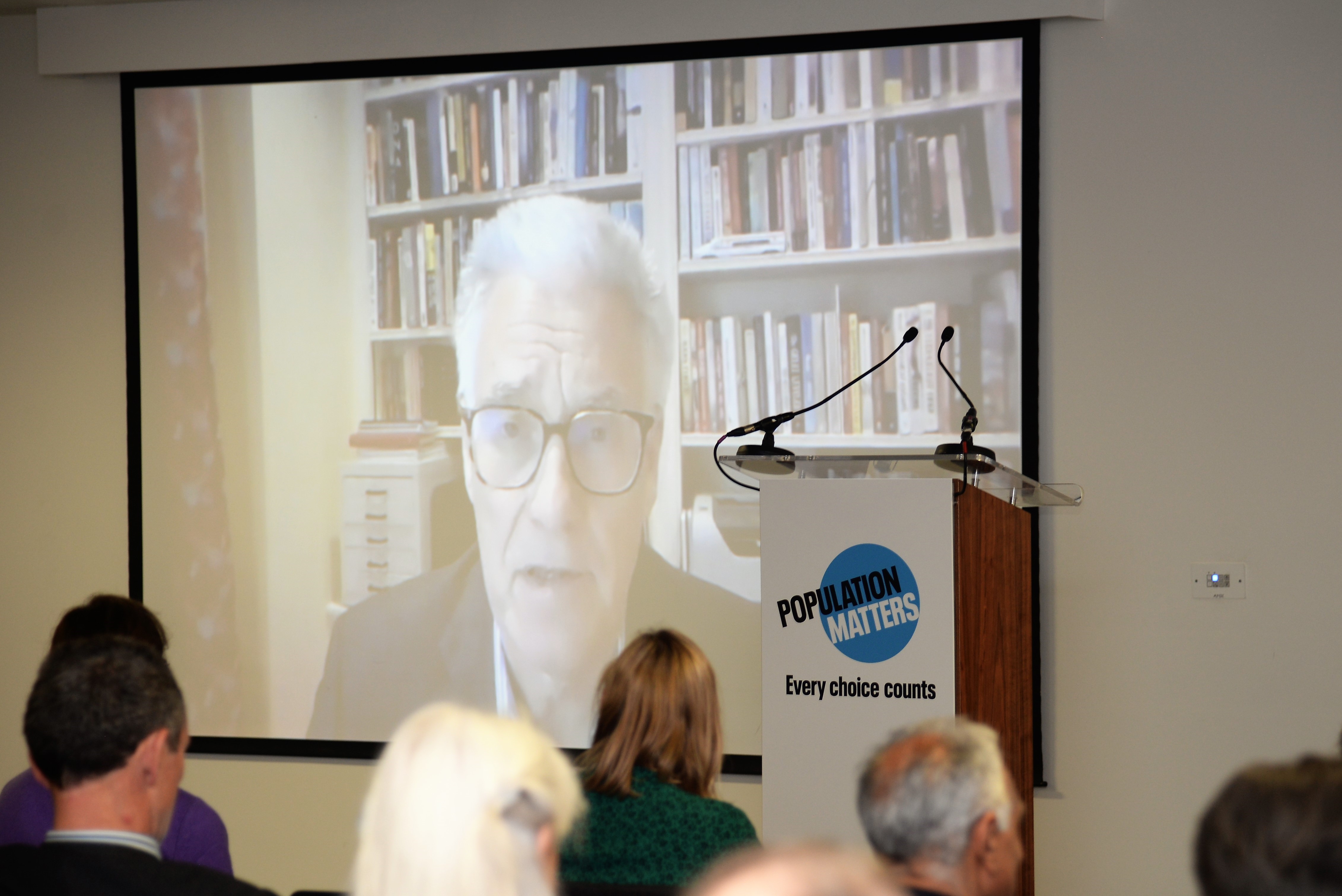
A Booming Success: Population Matters’ 2021 Conference
On 8th October, Population Matters hosted Boom or Bust, our online and in-person conference addressing the intersection of population and economics, with a focus on how societies can flourish with a smaller, more sustainable population. A truly global cast of speakers – beaming in from Taiwan, Spain, Ghana, France, the US, UK, and Kenya – brought a wide variety of fascinating perspectives and areas of expertise. Population Matters’ Robin Maynard and Monica Scigliano report.

Ably supported by our chair Emma Duncan of The Economist, with audiences online and in London, our speakers delivered a vibrant, thought-provoking discussion. As at any worthwhile conference, differences of opinion were aired on some of the finer points, and the presentations brought fresh perspectives and positive challenges. Overall, however, there was considerable overlap and alignment in our speakers’ analysis of the issues and solutions.
Inconvenient Truths
Chaitanya Kumar of the New Economics Foundation opened his presentation with a reminder from the World Scientists’ Warning that scientists have a “moral obligation” to inform people of the facts and extent of threats like the climate crisis. His presentation focussed on available policy solutions that will help create an economy suited to our challenges.
Graeme Maxton‘s presentation certainly informed people of the facts, starkly setting out the current data on the climate emergency. Whilst politicians speak of holding the average temperature increase at or below the critical 1.5°C target, Maxton cited data indicating we’re on course to breach that, requiring we cut emissions “by every means possible”. Addressing population growth is one such means – a theme picked up by other speakers.
Laurel Hanscom emphasised planetary boundaries, lamenting that she and colleagues at the Global Footprint Network still come across “economists who do not accept the Earth is finite” and promote never-ending growth. She reminded us that humanity currently (and inequitably) uses 1.7 Earths’ worth of natural resources annually. Ending that ‘overshoot’ requires both decreasing consumption and addressing population growth.

Gaya Herrington reinforced the urgent choice confronting human society: “end the crude pursuit of growth or have limits forced upon us”. She presented the unsettling results of her review of the Club of Rome’s 1972 Limits to Growth (LtG) predictions, dismissed by critics as “not having happened”. But the predicted collapse point was always projected to occur in the 21st Century – not earlier as misrepresented previously. Despite significant developments in green technologies, her analysis found humanity is currently tracking the two LtG scenarios most likely to end in societal collapse. “Why didn’t people ever bother to check the data?”, she asked rhetorically.
Population and Development
A recurring theme was that, in low-income countries, continued population growth is actually a threat to both environmental sustainability and economic development. Dr Leticia Appiah of the National Population Council of Ghana explained that high fertility rates hamper development by exacerbating high unemployment, insufficient capital, and political instability. In contrast, improving access to family planning brings benefits not just for individual women but for whole societies: “What we really need is to slow population growth and have zero population growth [everywhere]”.
Although an exception to the rule herself, Leticia pointed that the inequality girls and women face across many sub-Saharan African countries is reflected in their lack of engagement in and so influence over policy and cultural change. With few women represented amongst political leaders, progress, understanding of and improvement in women’s rights and opportunities stalls. She regretted the prevalent “opposition to the science of effective population management” and ignorance of how that science enhances human and environmental wellbeing.
Keynote speaker Dr Eliya Zulu of the African Institute for Development Policy emphasised that population is a multi-sectoral issue: environmental impact being not the only or most important consideration. As contributing least to global emissions, it is not the responsibility of countries with high fertility rates to slow population growth for the sake of the global climate crisis. The imperative for high-fertility countries is to meet their citizens’ primary needs for family planning, education, and healthcare, which of course slow population growth but, as also articulated by Leticia Appiah, are critical for achieving greater wellbeing.
Boom or Bust Conference Presentations

Silver Linings
In developed countries, low birth rates present a different economic reality – prompting some concerns. Indeed, alarmist media headlines of a ‘jaw-dropping collapse in fertility’, ‘baby bust’, etc., and the alleged economic consequences inspired the conference’s title. Our speakers, however, echoed the main finding of PM’s recent report, Silver Linings, not Silver Burdens: an ageing, stabilising, declining population is not something to fear. As Professor Sarah Harper of the Oxford Institute of Population Ageing stressed, the 21st century is and will continue to be a period of significant demographic change; a reality that should not come as a ‘shock’: “the [demographic] challenges could and should have been seen. We have had the data and projections for years”.
Rather than seeking to halt and reverse those changes, as some countries are attempting through ‘pro-natalist’ policies (“it is politically very irresponsible to put pressure on couples in high-consuming countries to have more children”), Sarah Harper proposed adjusting pensions and healthcare policies to effectively manage the changes.
Her position was endorsed and amplified upon by Lord Adair Turner of the Institute for New Economic Thinking, who advised policymakers to resolve concerns about workforce shortages and pension funds through sound macroeconomic policy. Echoing his comments in the foreword to the Silver Linings report, he added that low birth rates – which occur when girls and women have greater access to education and reproductive healthcare – are a sign of societal progress. Lord Turner also made the connection between population growth and future climate impacts. A greater number of people in developing countries must be enabled to benefit from a higher standard of living and wellbeing – inevitably meaning greater per capita resource and energy use. Therefore, in his words, “it is a facile statement to say that population growth has really nothing to do with climate change”.

Hooked on Growth
Driving ‘demographic alarm’ is the likelihood that less population growth means less economic growth for wealthy countries. As Lord Turner remarked, “Capitalists love growing, booming populations”. So yes, advocating for a stable population, also means calling for a steady economy. Environmental economist Dr Jeroen van den Bergh offered a relevant model, which he terms ‘agrowth’. He proposes this as an alternative to two commonly proposed but opposed models: ‘green growth’, which he dismissed as an illusion, given the challenge to “decrease carbon intensity by 82%” to keep at or below 2 degrees temperature rise, and ‘degrowth’ – “a Quixotic quest” which no politician will countenance. By tying success to measures of social welfare rather than GDP, politicians could focus on policies that actually improve people’s lives and care for the planet.
Urgency of Action
All the speakers were unanimous in calling for urgent action: the time for incremental change is gone, transformational change is needed. As PM director Robin Maynard noted in his contribution to a stimulating panel discussion, population solutions are part of that.
But population dynamics don’t change quickly, and with respect to global justice, wealthy countries must rapidly decrease consumption. Population remains critical for long-term sustainability and the positive solutions by which we can achieve a stable population – women’s empowerment, girls’ education, voluntary, modern family planning – are good for all of society.
As a first step, PM is calling for coordinated global action to end the unmet need of 270 million women in low- and middle-income countries who are currently unable to use safe, modern family planning (which would cost only a third of Amazon founder’s Jeff Bezos’ $191 billion personal fortune).
For high-income countries like the UK, as Lord Turner suggested, policymakers should celebrate their ageing populations as an achievement, adjusting pension and healthcare systems accordingly – rather than trying to persuade women to have more children.
Building on the day
We were delighted that the conference, through the presentations of our excellent speakers and questions from our global audience, highlighted critical issues which are not yet properly addressed in policy debates. Alongside researching our Silver Linings report, it has also enabled Population Matters to broaden and deepen our understanding of the critical intersection between population and economics. In parallel, we have been reaching out to an international network of economists, demographers, and others interested and active in this field, in both the Global South and the Global North. Stay tuned for more information! In the meantime, we are processing recordings of parts of the conference and will share them when they are ready.
Thank you to all who participated in London or online and especially to our speakers.
